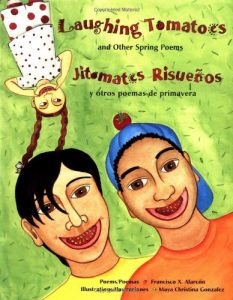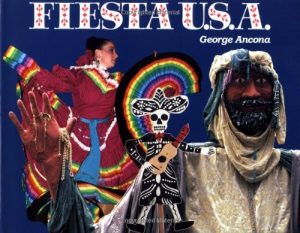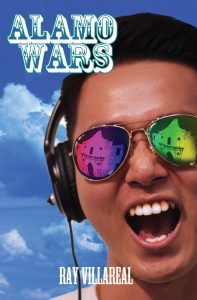 Josephine “Miss Mac” McKeever had taught English and Theatre Arts at Rosemont Middle School for so long that her colleagues sometimes joked that she would die in the classroom. So when she does just that, students, teachers, and administrators are stunned. After getting over the initial shock of losing their colleague, the staff agrees that they need to do something very special to acknowledge Miss Mac’s fifty-one years of dedication to the students at Rosemont and suggest naming the school’s auditorium after her. When Mrs. Frymire, her long-time colleague and friend, discovers a play written by Miss Mac years before, she knows that it would be the perfect memorial to present the play, Thirteen Days to Glory: The Battle of the Alamo, in the school’s auditorium named after her friend. But the teachers quickly learn that presenting a play isn’t as easy as Miss Mac had always made it seem, and soon the entire school community is in an uproar as conflicts related to the play emerge. Seventh-grader and Golden Gloves boxer Marco Diaz is, at first, excited to be chosen to play Jim Bowie, the brave Texan who defended the Alamo against Santa Anna’s Mexican Army. But his friend Raquel, an undocumented immigrant, calls him a sell-out because she believes the play makes heroes out of the people who stole her ancestors’ land. And Sandy Martinez, Miss Mac’s much younger replacement, finds the Mexican characters’ dialogue not only politically incorrect but downright offensive. Miss Mac’s friends, though, are adamantly opposed to making changes. Ms. Martinez also tries to convince them that giving certain students plum roles in exchange for their parents’ contributions is wrong, but ends up leaving the production in frustration. Meanwhile, rehearsals only serve to increase the tension between Marco’s friend Izzy Pena and the school bully Billy Ray Cansler. And it’s only a matter of time before Billy Ray corners Izzy when Marco isn’t around to protect him. Weary from struggling with disruptive kids, teachers and kids dropping out of the play, and parents with unreasonable expectations, everyone begins to wonder if they should just give up and cancel the production. Is it too much to expect everyone to work together to pay homage to a long-time friend and teacher?
Josephine “Miss Mac” McKeever had taught English and Theatre Arts at Rosemont Middle School for so long that her colleagues sometimes joked that she would die in the classroom. So when she does just that, students, teachers, and administrators are stunned. After getting over the initial shock of losing their colleague, the staff agrees that they need to do something very special to acknowledge Miss Mac’s fifty-one years of dedication to the students at Rosemont and suggest naming the school’s auditorium after her. When Mrs. Frymire, her long-time colleague and friend, discovers a play written by Miss Mac years before, she knows that it would be the perfect memorial to present the play, Thirteen Days to Glory: The Battle of the Alamo, in the school’s auditorium named after her friend. But the teachers quickly learn that presenting a play isn’t as easy as Miss Mac had always made it seem, and soon the entire school community is in an uproar as conflicts related to the play emerge. Seventh-grader and Golden Gloves boxer Marco Diaz is, at first, excited to be chosen to play Jim Bowie, the brave Texan who defended the Alamo against Santa Anna’s Mexican Army. But his friend Raquel, an undocumented immigrant, calls him a sell-out because she believes the play makes heroes out of the people who stole her ancestors’ land. And Sandy Martinez, Miss Mac’s much younger replacement, finds the Mexican characters’ dialogue not only politically incorrect but downright offensive. Miss Mac’s friends, though, are adamantly opposed to making changes. Ms. Martinez also tries to convince them that giving certain students plum roles in exchange for their parents’ contributions is wrong, but ends up leaving the production in frustration. Meanwhile, rehearsals only serve to increase the tension between Marco’s friend Izzy Pena and the school bully Billy Ray Cansler. And it’s only a matter of time before Billy Ray corners Izzy when Marco isn’t around to protect him. Weary from struggling with disruptive kids, teachers and kids dropping out of the play, and parents with unreasonable expectations, everyone begins to wonder if they should just give up and cancel the production. Is it too much to expect everyone to work together to pay homage to a long-time friend and teacher?
Author: Book Importer
Who’s Buried In The Garden?
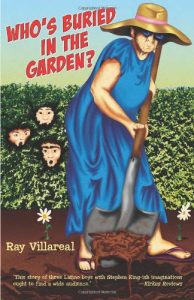 Seventh-grader Joshua knows his best friend Artie Mendoza is a liar. They have been friends since kindergarten, and Artie has told far-fetched stories for years. So when Artie tells Josh that there’s a body buried in Mrs. Foley’s garden, Josh doesn’t believe him at first. But when Josh walks by the Foleys’ house, he sees the mound of earth, about seven feet long and covered with flowers, and has to admit it does look like a grave. Artie insists that Mrs. Foley killed her husband and buried him in the back yard. The Foleys used to fight so loudly that kids walking in the alley behind their house could hear the arguments. Lately, there hasn’t been any sign of Mr. Foley. Still, Josh has his doubts. But Wolf Man, Artie’s other best friend, naively believes everything his friend tells him and encourages Artie’s plan to dig up the body. Josh doesn’t care much for Wolf Man, and if he’s honest with himself, he knows he’s jealous of the friendship between Wolf Man and Artie. Unlike Josh, they watch wrestling on TV, don’t care much about school, and on top of that, speak Spanish fluently, which makes Josh feel left out. While Josh struggles to avoid getting caught up in Artie’s scheme to get famous by digging up the supposed body in Mrs. Foley’s backyard he also tries to cultivate his budding friendship with Lorena, the prettiest girl in the seventh grade, who challenges Josh to see both Artie and Wolf Man in a different light. With other problems sprouting up all around him, Josh can’t help but wonder if there’s really a shovel-wielding criminal living in the neighborhood. Instead of digging up the garden, or grave, shouldn’t they call the police? Young adult author and educator Ray Villareal has written another fast-paced, exciting novel for middle-school students that explores the impact of making poor decisions and the importance of choosing the right friends.
Seventh-grader Joshua knows his best friend Artie Mendoza is a liar. They have been friends since kindergarten, and Artie has told far-fetched stories for years. So when Artie tells Josh that there’s a body buried in Mrs. Foley’s garden, Josh doesn’t believe him at first. But when Josh walks by the Foleys’ house, he sees the mound of earth, about seven feet long and covered with flowers, and has to admit it does look like a grave. Artie insists that Mrs. Foley killed her husband and buried him in the back yard. The Foleys used to fight so loudly that kids walking in the alley behind their house could hear the arguments. Lately, there hasn’t been any sign of Mr. Foley. Still, Josh has his doubts. But Wolf Man, Artie’s other best friend, naively believes everything his friend tells him and encourages Artie’s plan to dig up the body. Josh doesn’t care much for Wolf Man, and if he’s honest with himself, he knows he’s jealous of the friendship between Wolf Man and Artie. Unlike Josh, they watch wrestling on TV, don’t care much about school, and on top of that, speak Spanish fluently, which makes Josh feel left out. While Josh struggles to avoid getting caught up in Artie’s scheme to get famous by digging up the supposed body in Mrs. Foley’s backyard he also tries to cultivate his budding friendship with Lorena, the prettiest girl in the seventh grade, who challenges Josh to see both Artie and Wolf Man in a different light. With other problems sprouting up all around him, Josh can’t help but wonder if there’s really a shovel-wielding criminal living in the neighborhood. Instead of digging up the garden, or grave, shouldn’t they call the police? Young adult author and educator Ray Villareal has written another fast-paced, exciting novel for middle-school students that explores the impact of making poor decisions and the importance of choosing the right friends.
Brothers Torres, The
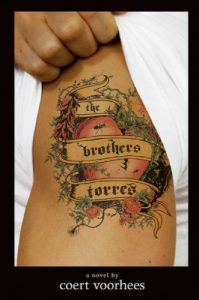 Frankie Towers has always looked up to his older brother, Steve, and with good reason. Steve is a popular senior who always gets what he wants: girls, a soccer scholarship, and–lately–street cred. Frankie, on the other hand, spends his time shooting off fireworks with his best friend Zach, working at his parents’ restaurant, and obsessing about his longtime crush, Rebecca Sanchez.
Frankie Towers has always looked up to his older brother, Steve, and with good reason. Steve is a popular senior who always gets what he wants: girls, a soccer scholarship, and–lately–street cred. Frankie, on the other hand, spends his time shooting off fireworks with his best friend Zach, working at his parents’ restaurant, and obsessing about his longtime crush, Rebecca Sanchez.
Frankie has reservations about Steve’s crusade to win the respect of the local cholos. He doesn’t think about them, though, until he gets into a fist fight John Dalton – the richest, preppiest kid in his New Mexican high school, and longtime nemesis of Steve. After the fight, Steve takes Frankie under his wing – and Frankie’s social currency begins to rise. The cholos who used to ignore him start to recognize him; he even lands a date to Homecoming with Rebecca.
The situation with Dalton continues to simmer, and after another incident Steve is bent on retaliating. Frankie starts to think that his brother is taking this respect thing too far. He may have to choose between respecting his brother and respecting himself.
In an honest and humorous debut novel, Coert Voorhees uses a coming of age story to look at where loyalty ends and the self begins.
From The Bellybutton Of The Moon And Other Summer Poems/Del Ombligo De La Luna Y Otros Poemas De Verano
 From the Bellybutton of the Moon is renowned poet Francisco X. Alarcon’s fresh collection of 22 bilingual poems inspired by his touching recollections of childhood summers in Mexico. With a poet’s magical vision, Alarcon takes us back to his childhood when he traveled with his family to Mexico to visit his grandma and other relatives. We travel with him in the family station wagon, across the misty mountain range to the little town of Atoyac. There, in the beloved town of his ancestors, we hear his grandma’s stories, sample Auntie Reginalda’s tasty breakfasts, learn about the keys to the universe, and take playful dips in the warm sea. The lighthearted illustrations of Maya Christina Gonzalez perfectly capture the spirit of a summer in Alarcon’s Mexico where “colors are more colorful, tastes are tastier, and even time seems to slow down.”
From the Bellybutton of the Moon is renowned poet Francisco X. Alarcon’s fresh collection of 22 bilingual poems inspired by his touching recollections of childhood summers in Mexico. With a poet’s magical vision, Alarcon takes us back to his childhood when he traveled with his family to Mexico to visit his grandma and other relatives. We travel with him in the family station wagon, across the misty mountain range to the little town of Atoyac. There, in the beloved town of his ancestors, we hear his grandma’s stories, sample Auntie Reginalda’s tasty breakfasts, learn about the keys to the universe, and take playful dips in the warm sea. The lighthearted illustrations of Maya Christina Gonzalez perfectly capture the spirit of a summer in Alarcon’s Mexico where “colors are more colorful, tastes are tastier, and even time seems to slow down.”
Iguanas In The Snow / Iguanas En La Nieve: And Other Winter Poems / Y Otros Poemas De Invierno
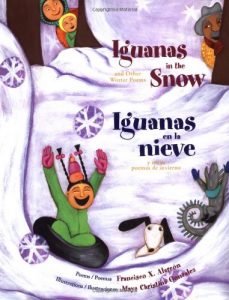 This collection invites us to celebrate winter — by the seashore, in the city of San Francisco, and in the ancient redwood forests of the Sierras. We see a city where people have become bridges to each other and children sing in two languages. A family frolic in the snow reminds the poet of the iguanas playing by his grandmother’s house in Mexico. The seedling redwoods promise tomorrow. Maya Christina Gonzalez creates a spirited family of children and adults making their way through lively settings.
This collection invites us to celebrate winter — by the seashore, in the city of San Francisco, and in the ancient redwood forests of the Sierras. We see a city where people have become bridges to each other and children sing in two languages. A family frolic in the snow reminds the poet of the iguanas playing by his grandmother’s house in Mexico. The seedling redwoods promise tomorrow. Maya Christina Gonzalez creates a spirited family of children and adults making their way through lively settings.
Laughing Tomatoes And Other Spring Poems / Jitomates Risuenos Y Otros Poemas De Primavera
The Santero’s Miracle: A Bilingual Story
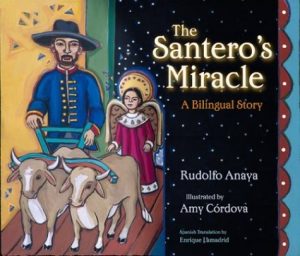 In this bilingual story of faith, Don Jacobo has a dream that, in the end, is a reminder that miracles do happen. Jacobo is teaching his visiting grandson Andrés how to become a santero. Christmas is coming, snow is falling in the village, and the two are working on a carving of San Isidro, the patron saint of farmers. The half-finished carving stands in the living room beside the two oxen and the angel that don Jacobo carved earlier in the month. The snow-covered mountains are beautiful, but the road to the village is impassable. Andrés’s parents will not be able to get to the house for the holiday, and Jacobo’s neighbor Leopoldo is desperately ill but cannot get to the hospital. Then comes Jacobo’s dream; San Isidro is plowing with the two oxen and the angel is helping. \”But we don’t plow ’til April\” don Jacobo muses upon awakening. \”What does it mean?\” The night had been bitterly cold and don Jacobo must bundle up to go to the barn to feed his cows and chickens. As he steps outside, he can hardly believe his eyes. The snow-packed road is clear. Rudolfo Anaya’s story of the power of faith, hope, and love will be enjoyed by readers of all ages.
In this bilingual story of faith, Don Jacobo has a dream that, in the end, is a reminder that miracles do happen. Jacobo is teaching his visiting grandson Andrés how to become a santero. Christmas is coming, snow is falling in the village, and the two are working on a carving of San Isidro, the patron saint of farmers. The half-finished carving stands in the living room beside the two oxen and the angel that don Jacobo carved earlier in the month. The snow-covered mountains are beautiful, but the road to the village is impassable. Andrés’s parents will not be able to get to the house for the holiday, and Jacobo’s neighbor Leopoldo is desperately ill but cannot get to the hospital. Then comes Jacobo’s dream; San Isidro is plowing with the two oxen and the angel is helping. \”But we don’t plow ’til April\” don Jacobo muses upon awakening. \”What does it mean?\” The night had been bitterly cold and don Jacobo must bundle up to go to the barn to feed his cows and chickens. As he steps outside, he can hardly believe his eyes. The snow-packed road is clear. Rudolfo Anaya’s story of the power of faith, hope, and love will be enjoyed by readers of all ages.
Americas Award For Children’s And Young Adult Literature. Commended (Awards)
Fiesta U.S.A.
The Piñata Maker / El Piñatero
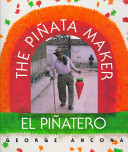
Told in both English and Spanish by award-winning author-photographer George Ancona, The Pinata Maker/El pinatero documents this traditional Latin American artform and includes a note on how to make pinatas at home. Set in Mexico.
Carnaval
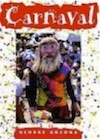
For weeks the people of the Brazilian town of Olinda have been sewing costumes, painting masks, and creating giant puppets–preparing for carnaval. Like Mardi Gras in New Orleans, carnaval is a five-day festival of parades, dancing, and singing. But unlike Mardi Gras, Olinda’s carnaval still celebrates the traditions and folklore of the people and the shared cultures–indigenous, European, and African–that make up Brazil. As generations have done each year, the people of Olinda and their visitors give themselves over to the music, dance, and joy of carnaval.

